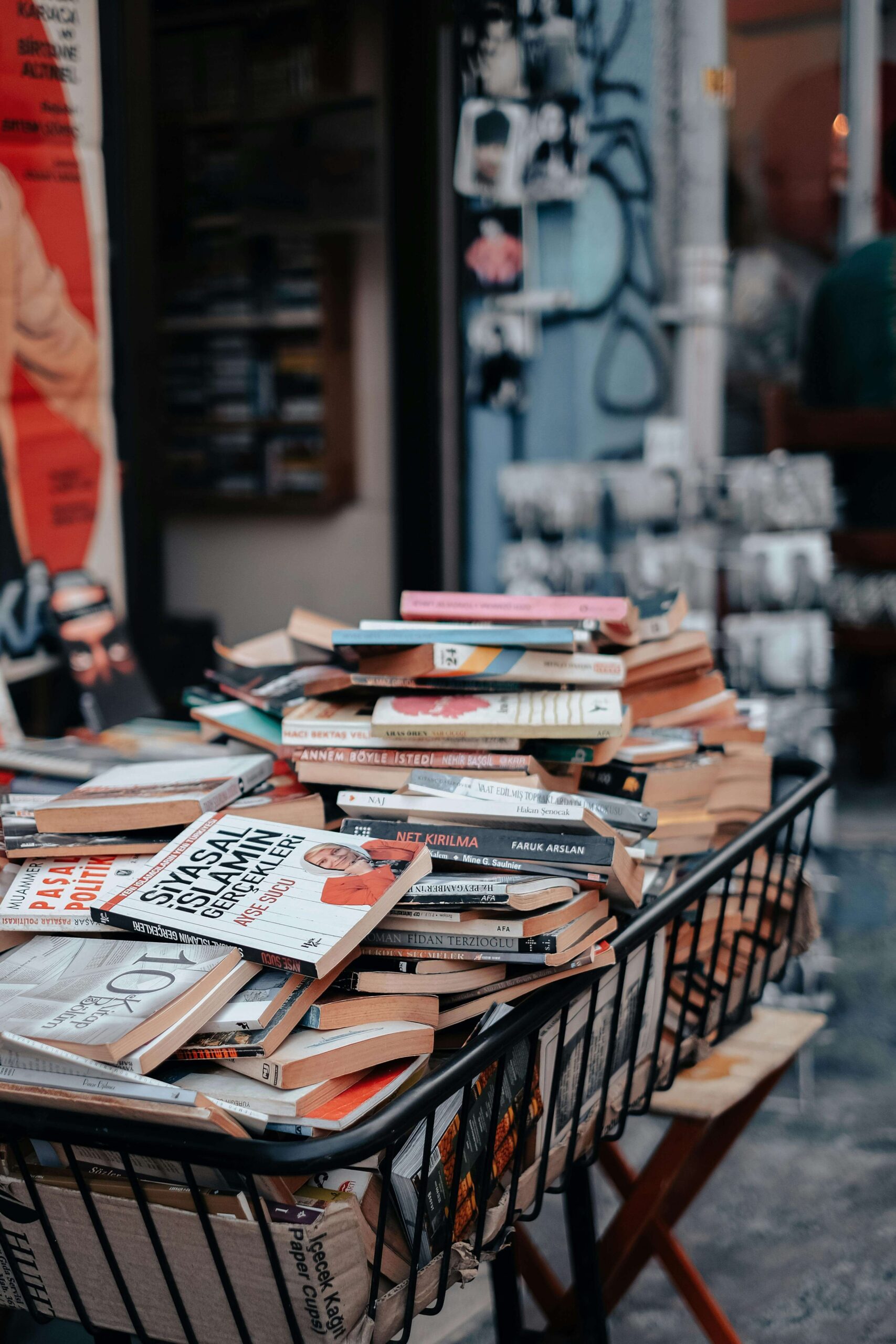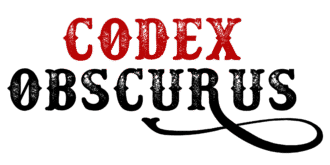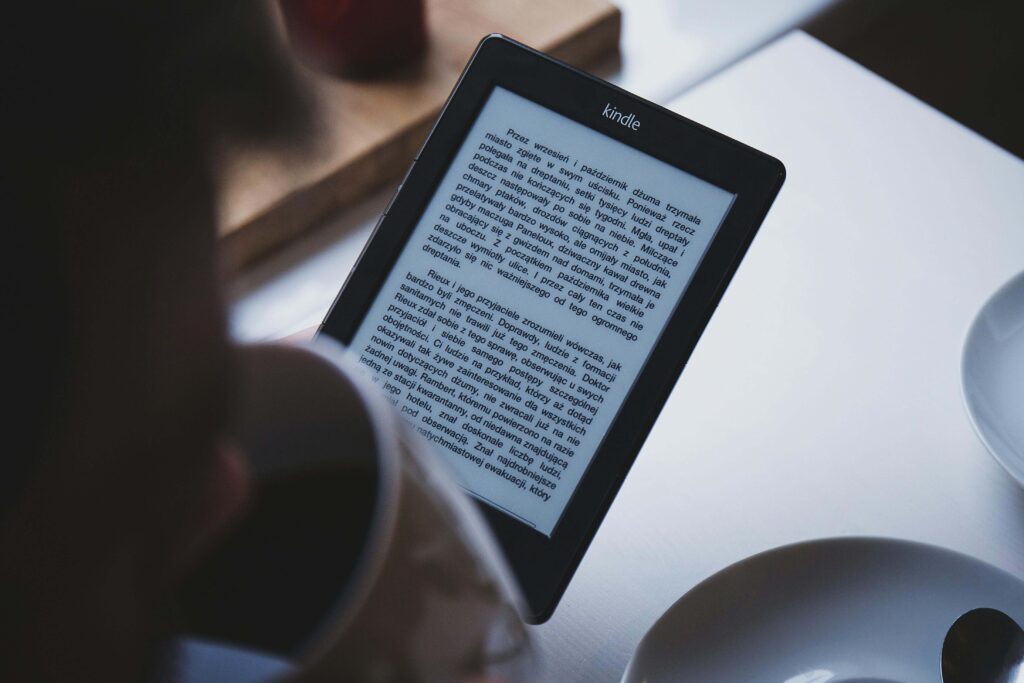
You wrote your book to help someone. To move them, teach them, or simply give them a story worth remembering. But none of that matters if no one finds it. That’s where becoming an Amazon bestseller comes in. Not as a vanity milestone, but as a way to put your book in front of the readers who need it most.
That little orange “#1 Best Seller” tag does more than decorate your listing. It builds trust at a glance. It tells readers, “Others found this book worth buying. Maybe you will too.” In a world of endless scrolling, that kind of instant credibility can make all the difference.
I’ve seen authors go from total obscurity to steady momentum just by hitting that mark. Suddenly, readers start recommending the book. Reviews start coming in. People begin sharing it without being asked. The badge becomes the spark that gets everything else moving.
If your goal is to reach more readers and make a lasting impact, it starts with visibility. And visibility starts with a strong launch plan built for Amazon’s algorithm, not guesswork.
This guide will walk you through how to get there, so your book isn’t just published, but discovered, read, and remembered.
Understanding the Amazon Bestseller Rank (BSR)
The Amazon Best Sellers Rank (BSR) is how Amazon shows which books are selling the fastest in real time. A lower BSR means higher sales.
For example, a book ranked #1 in its category is selling more copies per hour than any other book in that same category. Amazon updates these rankings every hour, which means your sales velocity directly affects your position.
Think of it like a stock ticker for books. Every sale pushes your book up the ranks, and every hour you’re competing with other authors for that visibility. The faster your book sells in a short time frame, the more likely you are to climb the Amazon bestsellers chart.
Even if you’ve never published before, this ranking system gives you a shot, as long as you can create a burst in sales momentum.
You don’t need to sell thousands of copies to become a category bestseller. In some Kindle subcategories, selling 50 to 100 copies within 24 to 48 hours can land you the top spot.
I’ve personally seen this happen for authors who had zero press coverage and barely any online presence. They focused on strategy, timed their promotions well, and watched their BSR drop like a rock in a good way.
The key is to focus on categories where the sales threshold is lower, and I’ll explain that in the next section. But for now, know this: the BSR is your book’s heartbeat. Track it. Understand it. And learn how to influence it with purpose.
Choose the Right Amazon Book Categories
Most authors publish and forget to optimize their categories. Big mistake.
Choosing the right Amazon book categories is one of the easiest ways to increase your visibility, and most authors completely overlook it. When you upload your book to Kindle Direct Publishing (KDP), Amazon lets you choose two categories by default.
But what many new authors don’t realize is that you’re allowed to request up to 10 categories through a quick email to KDP Support. That’s eight more chances to be discovered.
The trick? Find low-competition, high-relevance subcategories where you can realistically rank. You’re not trying to compete with James Patterson in “Thrillers & Suspense.” You’re trying to dominate a niche where your book naturally fits and the sales threshold is manageable.
I once had a client sell only 92 copies during their launch week but hit #1 in Children’s Multicultural Stories because the average daily sales in that category were much lower than in broader, more saturated genres like Children’s Fantasy.
If your book helps just one reader, and that reader tells others, you’ve already won more than a badge ever could.
That “Best Seller” badge still showed up on their listing, and readers responded to it. That one strategic move boosted their credibility overnight.
You can use tools like Publisher Rocket to make this process easier, or just go the manual route. Look at books in your niche and check their Best Sellers Rank. If they have a BSR over 10,000, it likely means the category is less competitive and within reach.
Make sure your chosen categories are:
- A perfect match for your book’s content and audience
- Less crowded than mainstream ones
- Listed under Kindle Store categories with clear, specific focus areas
Once you’ve picked your 10, email KDP Support with your ASIN and the exact category strings (like Kindle eBooks > Nonfiction > Self-Help > Time Management) you want to be added to.
I’ve done this process for multiple books, and each time, it’s helped push them into better positions for discoverability. It’s not a loophole. It’s smart positioning.
Optimize Your Book Listing for Amazon Search
Treat your Amazon book listing like an SEO landing page. Amazon is a search engine, and its algorithm looks for keyword relevance just like Google.
Think of your listing as your storefront. It’s the first thing a reader sees, and in a sea of millions of books, every word and image needs to earn its place.
Here’s what to focus on:
Title & Subtitle
These are prime real estate for Amazon keywords. If you’re writing a self-help book, don’t just name it Breathe. Pair it with a subtitle like A Self-Help Guide for Anxiety and Overthinking in Your 20s.
That way, you’re telling Amazon and your reader exactly what the book solves. It also shows up in search results when someone types in “self-help for anxiety.”
Description
This is where you convince readers to click “Buy Now.” Format it using HTML (Amazon accepts basic tags like <b>, <br>, and <ul>), so it looks clean and professional. Hook them with an emotional first sentence, then give them a reason to care.
Instead of writing a dry summary, show them what they’ll gain. Ask questions that echo their struggles: “Do you feel like you’re stuck in survival mode every Monday?” That kind of copy connects.
Keywords
Amazon gives you seven keyword slots, and these are powerful behind-the-scenes drivers. Tools like KDP Rocket (now part of Publisher Rocket) can help you uncover what real buyers are typing into Amazon.
You can also type a phrase into Amazon’s search bar and look at the autocomplete suggestions. That’s pure, user-generated data. Choose keywords that are specific but frequently searched. Think “urban fantasy novel with dragons” instead of just “fantasy.”
Cover & Formatting
This part makes or breaks your credibility. I’ve worked with talented writers who couldn’t figure out why their books weren’t selling until they updated their cover. Once they aligned the visual style with reader expectations in their genre, their conversion rate doubled.
Your cover doesn’t need to be expensive, but it has to be polished and genre-appropriate. If someone glances at it and can’t immediately tell whether it’s romance, horror, or nonfiction, that’s a red flag.
As for formatting, whether you’re publishing on Kindle or paperback, the interior needs to feel professional. Odd spacing, weird fonts, and inconsistent layout will get you bad reviews, even if your writing is top-tier.
Tools like Vellum or Atticus make formatting easier, and they’re worth every cent if you plan to publish more than once. Every piece of your Amazon listing is working to either build trust or lose it. Make every word, every keyword, and every design element count.
Smart Pricing Strategies
Pricing can make or break your launch. If your goal is to hit the Amazon bestsellers list, consider starting with a low introductory price like $0.99 or $2.99 to spike sales velocity.
Those early sales are what push your BSR lower, helping you climb the charts faster. Think of it like opening weekend for a movie. People show up because the price is right, and the buzz starts spreading.
A low launch price makes your book easier to say yes to, especially for readers who’ve never heard of you.
Here are some simple but powerful pricing techniques to help you gain momentum:

Kindle Countdown Deals
These limited-time promotions work best when you already have some visibility. Readers love a ticking clock. Pair a Countdown Deal with paid ads or newsletter promos to make the most of the urgency.
You also retain the 70% royalty during the discount window, which helps your earnings stay healthy while you’re climbing the Amazon bestsellers chart.
Limited-time discounts
This is where your email list and social media followers come in. If you’ve been warming up your audience, give them a short heads-up: “The book drops to $0.99 for 48 hours only.” People are far more likely to act when they feel like they’re getting in early.
Permanent pricing
After launch, you’ll want to reassess. What are similar books in your genre selling for? How are your reviews looking? If your book is a short guide or novella, $2.99 might be your sweet spot.
For a full-length novel or nonfiction resource, $3.99–$5.99 is more typical. Price too high without a strong reputation, and new readers may hesitate. Price too low for too long, and you risk looking unprofessional.
Keep in mind that Amazon takes a 70% royalty on books priced between $2.99 and $9.99, and only 35% below or above that range. That means every sale at $2.99 earns you around $2.09, while a $0.99 book brings in about $0.35.
There’s no right or wrong way. It depends on your strategy. Some authors focus on volume to rank, while others are willing to trade speed for profit.
In my case, I launched one of my nonfiction books at $0.99 for three days and landed in the top 3 of my category. Once I hit that spot, I slowly increased the price and still held my ranking for another few days.
It worked because I planned the launch window, promoted it actively, and treated pricing like a lever, not a label.
Launch Your Book Like a Bestseller
Your first 72 hours matter more than any other time. That’s when Amazon’s algorithm is paying close attention.
I’ve worked with self-published authors who had small audiences but launched successfully because they prepped their launch like a campaign—with real strategy, real deadlines, and real momentum.
This is the moment to go all in. Treat your launch window like opening night for a new restaurant. You want people lining up, talking about it, and telling their friends.
If you can generate buzz and concentrate your traffic and sales into those first few days, you’ll send a strong signal to Amazon. And that’s what gets you closer to the Amazon bestsellers list.
Here’s what works:
- Build a launch team of 30–50 readers who get a free copy and commit to leaving a review during launch week. These people can be friends, email subscribers, or beta readers who already believe in your work. Give them early access and make it feel exclusive. Ask them to buy the book on launch day, even for $0.99, so their review shows up as “verified.” That matters.
- Send email sequences to your list with pre-launch teasers, launch day announcements, and a follow-up thank-you. The goal is to warm them up before the book goes live so you’re not starting from zero. I usually send a countdown-style sequence three days before, day of launch, and a final reminder at the 48-hour mark. It works because you’re not relying on a single email blast. You’re building anticipation.
- Use free or paid book promo sites like BookSends, Freebooksy, and Robin Reads to drive outside traffic. These sites have massive lists of hungry readers segmented by genre. You can schedule these promos to hit during your launch window for maximum effect. Some of my best-performing launches used three promo sites stacked over two days, and the sales spike pushed the book into the top five of its category.
- Align all efforts—your social posts, email campaigns, podcasts, and even influencer shoutouts—to create a single wave of attention. The more coordinated your traffic sources, the bigger your spike. Post countdown reels on Instagram. Drop behind-the-scenes TikToks. Hop on live Q&As the night before. Every bit of attention counts if you direct it to that Amazon product page.
That sales spike is what drives your BSR low enough to hit #1 in your category. Amazon is watching the volume and speed of your sales, and when they see a strong surge, they reward you with visibility.
That’s how you go from unknown to Amazon bestseller—by showing up prepared and moving fast when it counts.
Promote Beyond Amazon
Amazon might be where your book lives, but it won’t promote your book unless you feed it traffic.
This is where most authors get stuck.
They assume listing their book is enough, but Amazon needs signals—clicks, sales, and outside interest—to start recommending your book to new readers. That means it’s up to you to create that initial push and keep it going.
You don’t need to sell thousands of copies to become a category bestseller.
Use these strategies to bring in new readers:
Run Amazon Ads targeting relevant keywords and competitor titles. These ads show up right on the product pages of other books, which puts yours directly in front of readers who are already shopping.
You can even target author names or book titles similar to yours. If you’re writing a thriller, imagine showing up on the same page as a big name like Gillian Flynn or Harlan Coben. That’s valuable visibility.
Use Facebook Ads to drive traffic to your Amazon page with a “Buy Now” link. The strength of Facebook lies in how specific you can get. You can target people by genre interests, age, gender, location, and even their purchase behavior.
One author I worked with saw a 4x return on ad spend just by running a simple “New Release” ad to fans of similar authors.
Promote your book on niche platforms like BookFunnel or through BookTok. BookFunnel helps you build an email list by offering free samples, bonus content, or ARCs. And TikTok? It’s not just for dances.
Some indie authors have sold tens of thousands of books by sharing behind-the-scenes writing clips, emotional book summaries, or creative “if you liked this, read this” videos. Readers scroll, they click, they buy. I’ve seen it happen.
Get featured in niche newsletters or Facebook groups for your genre. There are communities out there for every type of reader, whether it’s cozy mystery, paranormal romance, or historical nonfiction.
These groups are full of readers actively looking for their next book. Reach out, introduce your book, offer something of value, and engage without spamming. If done right, these features can lead to an instant boost in traffic and even a few loyal superfans.
Think of Amazon as the bookstore and your job as the one putting flyers on every door in the neighborhood. The more qualified traffic you send in, the more the algorithm takes notice.
Once momentum builds, Amazon starts recommending your book on its own. But to get to that point, you have to start the fire yourself.
Get Reviews That Build Trust
Amazon’s algorithm favors books with verified reviews. But more importantly, readers do too. According to Spiegel Research Center, books with reviews see a 270% increase in purchase likelihood.
That’s not a small bump. It’s a massive leap in trust. And in a marketplace where readers are often comparing several books at once, your reviews could be the deciding factor.
Think about how you shop. You scroll through the reviews, look for patterns, and check for red flags. Your readers are doing the exact same thing.
They want to know if the book delivers, if it’s worth their time, and if it speaks to them. Reviews answer those questions faster than any blurb can.
Ask for reviews ethically:
- Include a polite request at the end of your book. Just one or two lines—“If you enjoyed this story, please consider leaving a quick review on Amazon. It really helps readers discover my work.” No pressure, just a simple nudge. You’d be surprised how many readers respond when asked directly.
- Send an email follow-up to your ARC readers. These are your early supporters, and they’ve already read the book. Give them a gentle reminder as soon as the book goes live. In my case, I usually send a short thank-you note with a direct link to the review page. Removing the friction helps a lot.
- Offer bonuses for early reviewers. These can be anything from a free short story, a character profile, a printable journal page, or even a discount code for your next release. You’re not paying for a review. You’re thanking them for their time. Make it feel like a reward, not a transaction.
Just never buy reviews. Amazon’s review policy is strict, and violations can get your book banned. Once you’re flagged, it’s hard to recover your credibility or your book’s visibility. I’ve seen authors lose months of momentum from one bad move.
Build your reviews the right way. One honest review from a real reader is worth more than a dozen fake ones. And over time, as those reviews build up, they act like social proof that keeps working for you, even while you sleep.
Stay Relevant After Launch
Your book launch is only the beginning.
Once the initial rush settles, you need a plan to keep your book visible. Without consistent activity, Amazon’s algorithm shifts its attention to fresher titles. That’s why staying active, even in small, steady ways, helps you hold your place or even climb higher.
Visibility on Amazon is tied to momentum, and momentum doesn’t have to mean burning out. It means being strategic with the energy you have.
Here’s how to maintain visibility:
- Set up Amazon Ads to run at a low daily budget over time. You don’t need to throw hundreds of dollars at it. Even $3 to $5 per day can keep your book in front of new readers consistently. Use your best-performing keywords and monitor what converts. I’ve had ads that quietly sold dozens of copies over weeks without needing constant tweaking. It’s like putting your book on autopilot—just make sure to check in and optimize now and then.
- Post on social regularly with behind-the-scenes content, reader testimonials, and themed posts. Readers love getting a peek behind the curtain. Share your writing process, deleted scenes, fan photos, or quotes from your book that sparked strong reactions. When someone tags you after finishing your book, repost it. It creates a loop—readers become marketers without even realizing it.
- Pitch yourself to podcasts, blogs, and influencers in your niche. A single podcast episode can introduce your book to hundreds or even thousands of potential readers. Reach out with a short pitch explaining why your story fits their audience. I once landed a spot on a niche podcast with only 2,000 listeners—but after the episode aired, my book sales spiked for two full days. Relevance isn’t about audience size; it’s about the right audience.
- Create a lead magnet in the back of your book to build an email list for future launches. This could be a bonus chapter, a printable worksheet, a free novella, or a “reader’s club” invite. Whatever it is, make it feel like a thank-you for reaching the end. When someone finishes your book and connects with it, that’s the perfect moment to invite them into your world.
Staying relevant means showing up, even in small ways. The work you put in after launch is what separates one-hit wonders from authors who build real, lasting careers.

What Really Counts as an Amazon Bestseller?
You may not outsell Colleen Hoover or Brandon Sanderson, and that’s okay. Hitting #1 in a specific subcategory still gives you the right to call yourself an Amazon bestselling author.
That orange badge is social proof. It tells readers, “Others are buying this—maybe you should too.” In a world where attention spans are short and trust is hard to earn, that tiny label can carry more weight than a five-paragraph description.
I’ve had people message me saying they bought a book of mine simply because it said #1 Best Seller at the top. They hadn’t even read the blurb yet.
That kind of perception can change everything. It can open doors to speaking engagements, media coverage, podcast invites, and even blurbs from other authors.
People pay attention to that label because it signals momentum. And momentum is attractive, whether you’re pitching your book to a librarian, applying for a writer’s grant, or running ads on social.
Readers often buy with emotion and justify with logic. If your book is already a “bestseller,” they feel like they’re buying something trusted. It’s the online equivalent of seeing a crowd outside a restaurant.
Even if you weren’t planning to eat, you start wondering what the fuss is about. And that’s the effect you’re aiming for—curiosity, credibility, and confidence, all packed into one little badge.
Tools and Resources That Help
You don’t have to do this alone. Publishing a book and aiming for the Amazon bestsellers list can feel overwhelming, especially when you’re juggling everything from writing and formatting to marketing and promotion. But the right tools make the process smoother, more efficient, and way less stressful.
Here are some tools I’ve used myself, and I keep coming back to them:
- Publisher Rocket for category and keyword research. This tool saves hours of guesswork. Instead of blindly picking keywords or categories, you can see real search data from Amazon and find out what readers are actually typing. It’s how I discovered low-competition subcategories that helped me hit #1 with far fewer sales than expected.
- Canva Pro for book promo graphics. Whether you’re creating launch day announcements, quote cards, social media posts, or email headers, Canva makes it easy. You don’t need a design background to make your book look polished. I’ve created everything from countdown graphics to author quote templates in under 10 minutes.
- MailerLite for email campaigns. Your email list is one of your most powerful tools, especially during launch. MailerLite lets you build automated sequences, segment your readers, and track open rates. And it’s beginner-friendly. I’ve tested a bunch of platforms, but this one hits the sweet spot between functionality and simplicity.
- BookFunnel for lead magnets and giveaways. This tool is perfect for offering bonus content to readers, managing ARC distribution, and even collecting reader emails during promotions. I’ve used it to deliver free novellas and bonus scenes in exchange for newsletter sign-ups. It works.
- Reedsy for hiring freelance editors, designers, and marketers. If you’re self-publishing, you need a professional team, but finding one can be hard. Reedsy curates top-tier publishing talent, and you can review portfolios, set your budget, and communicate directly with freelancers. I’ve found amazing cover designers and developmental editors here who truly elevated my book.
And if you’re looking for support, check out communities like 20BooksTo50K on Facebook or the Self-Publishing Formula podcast. These are goldmines of advice, shared experiences, and encouragement from authors at every stage.
Whether you’re celebrating your first five sales or strategizing your tenth launch, you’ll find people who get it, and that kind of support is invaluable.
What It Really Means to Become an Amazon Bestseller
I believe chasing bestseller status should never just be about the badge. It’s about building momentum and making your book discoverable.
When you hit #1 on the Amazon bestsellers list, it feels incredible because it is. It validates the work you’ve put in.
It gives your book that extra push in visibility, makes readers stop scrolling, and helps spark conversations you didn’t even know you could be a part of. But that high? It fades fast if there’s no plan beyond the launch.
The real reward is what comes next: email subscribers, loyal fans, and a platform that grows every time you publish another book. That’s what I try to focus on.
Every time someone finishes your book and signs up for your newsletter, or tags you in a photo on Instagram, or recommends it to their book club, that’s the momentum that matters.
Amazon might be where your book lives, but it won’t promote your book unless you feed it traffic.
I’ve seen authors obsess over launch week and burn out fast. They pour everything into one release, expecting it to carry them for years.
But the ones who last? They treat publishing like a long-term business, where each book builds on the last. They look at the data, connect with readers, test new ideas, and keep showing up, even when the spotlight dims.
Aim to be that kind of author. Use Amazon bestsellers status as a launchpad, not the finish line. Because when someone finishes your book and feels understood, entertained, or inspired.
They’ll come back. They’ll look for your name again. They’ll tell a friend. And that kind of connection is what keeps you writing, publishing, and growing.
If your book helps just one reader, and that reader tells others, you’ve already won more than a badge ever could. And if you keep going, those wins add up. That’s the kind of legacy worth building.





Pingback: How to Use Reedsy to Hire Editors, Format Books, and Publish